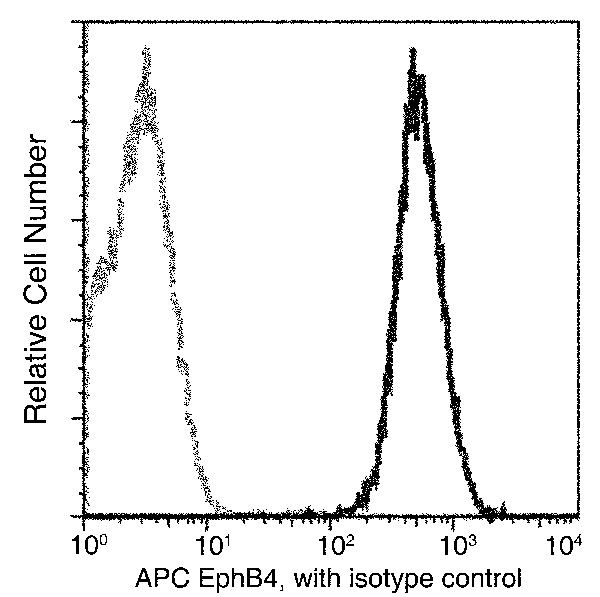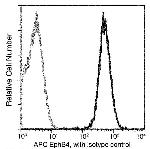Search Thermo Fisher Scientific
产品信息
MA5-40942
种属反应
宿主/亚型
Expression System
分类
类型
克隆号
抗原
偶联物
激发/发射光谱
形式
浓度
纯化类型
保存液
内含物
保存条件
运输条件
RRID
产品详细信息
May be stored for twelve months without detectable loss of activity. Protect from prolonged exposure to light and do not freeze. Sodium azide is toxic to cells and should be disposed of properly so flush with large volumes of water during disposal.
靶标信息
EPHB4 is a receptor tyrosine kinase that belongs to the ephrin receptor family. Members of the Eph family of kinases play important roles in diverse biological processes including nervous system development, angiogenesis and neural synapsis formation and maturation. Based on their structures and sequence relationships, ephrins are divided into the ephrin-A (EFNA) class, which are anchored to the membrane by a glycosylphosphatidylinositol linkage, and the ephrin-B (EFNB) class, which are transmembrane proteins. The Eph family of receptors are divided into 2 groups based on the similarity of their extracellular domain sequences and their affinities for binding ephrin-A and ephrin-B ligands. Ephrin receptors make up the largest subgroup of the receptor tyrosine kinase (RTK) family. The protein encoded by EphB4 binds to ephrin-B2 and plays an essential role in vascular development.
仅用于科研。不用于诊断过程。未经明确授权不得转售。
How to use the Panel Builder
Watch the video to learn how to use the Invitrogen Flow Cytometry Panel Builder to build your next flow cytometry panel in 5 easy steps.
篇参考文献 (0)
生物信息学
蛋白别名: ephrin receptor EphB4; Ephrin type-B receptor 4; Hepatoma transmembrane kinase; soluble EPHB4 variant 1; soluble EPHB4 variant 2; soluble EPHB4 variant 3; tyrosine-protein kinase receptor HTK; Tyrosine-protein kinase TYRO11
基因别名: EPHB4; HTK; MYK1; TYRO11
UniProt ID: (Human) P54760
Entrez Gene ID: (Human) 2050






